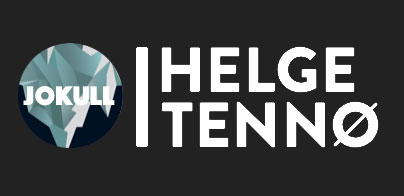Companies are prone to unconsciously hold a very limited view of their future
. Seeing the world from a technology, market or product perspective creates a very narrow frame of reference where new wealth opportunities are easily overlooked. Doubling down and settling for certainty rather than curiosity becomes a major hurdle, and especially if core components in the value chain is under pressure as a result of digitization (1). A new breed of Customer Strategy seems to be a surprisingly accessible solution to the problem.
It is common for companies to see the world through either a product (2), market (3) or technology mindset. This is a very limited perspective
. It often assumes that the future will be highly predictable and look much like the past. It is a very comfortable future, but it is likely to blame all the wrong actors when reality goes pear shaped / not according to plan. In case of a market mutation (4) it becomes even harder. Opportunities become labelled as threats and investments in innovation are there to preserve the currently shrinking value creation (5) rather than invest in new markets (6). Innovation becomes a disease, not the solution (7).
«What should executives do to ensure that their organizations will grow in this new world? For starters, it’s critical to question the old logic and vocabulary of competitive strategy. … mutations do not arise within industries; they arise as reconfigurations of assets defined by the unmet needs of individual end users. Mutations take root in individual space, and they quickly blur the boundaries of industries, sectors, and enterprises—ultimately making those boundaries obsolete.» – Shoshana Zuboff, Creating value in the age of distributed capitalism, http://bit.ly/2c45pFI
How do you break from all this? The answer is Customer Strategy. Tapping into the customers world view in order to unleash a much broader understanding of the world, develop a new common language and organize around a shared objective. Enabling the company to connect new dots, see new roles and forms of value creation, and explore means to unleash its potential. Understanding the business as a part of something larger and more interconnected than the industry mindset allows it to be.
The customers world view
It is common to think of customer feedback in terms of e.g. A/B testing, focus groups or surveys (amongst many). Because turning to the customer can help companies make better decisions, right? Well, yes. But it turns out that by asking customers direct questions, as is typical in these situations, they are held hostage to a limited world view proposed by the company. This becomes a huge problem, because even though customer willingly give lots of great feedback, they are unconsciously confirming that the world is limited to the narrow concept that is being framed by the questionnaire.
Customer insight is great at an operational level, but companies in situations where the limitations to their world view is becoming their greatest threat, need to start thinking of how they can use customers as a strategic asset more than just a qualifier at an operational level.
And this is where the comfort of logic breaks down, because if asking customers direct questions only takes them hostage to the company’s limited world view – how do you use them to help you find what you don’t know you are looking for?
“The only effetive way to understand what people truly mean is to ignore what they say” – The Culture Code, Clotaire Rapaille
The answer is «the dark room» (8): The world is not a lit room anymore. Where you could walk in and see the answer in front of you. The room is pitch dark and the answer keeps moving. Working with customer strategy for a couple of years now I find that if one thing is certain it is that where you find the answer is not necessarily only in one place. Its always a surprise, varying from project to project, and you can only find it if you are willing to help the company identify themselves as something other than the producers of products, inventors of technology or cogs in a shrinking machinery.
Using the customer in the right manner can unleash new wealth opportunities and growth areas for the company – and help them see where their investments are heading up a dead end road. But of course, this demands that we listen, and that we are open to understanding the customers world view and our role in it
possible should be considered prior to initiating therapy.relative safety. Alprostadil is widely approved worldwide How to get viagra.
. Popular among these tools are «what job does the customer hire the service for?» (9) or even more meaningful in my experience «what problem do we solve?»
. Now both these can be easily botched in a lazy workshop with participants unwilling to break from their comfortable world view. But with the right team, mindset and sometimes a bit of luck, a definition to and supporting insight for a new way of understanding the world can start a dialogue and movement inside the company. The goal is to end up with a a new frame of reference and a shared language in order to help teams find new purpose and growth.
As much as this demands a shift on the company side, it also demands a shift on the part of the customer insight. CI as an industry has spent years building a wall around itself protecting it from uncomfortable ideas. Its tools are as stuck in its old opinions of how the world works and how to accommodate customers as you can find in any other industry. Which is as big a part of the problem as anything. Unless CI can demonstrate that there is a new category of tools and approaches to help companies solve brand new problems – their customers won’t understand how they can help.
The power of the customer seems unlimited, but unfortunately it also seems untapped. Using some very accessible tools and exploring the outcomes of a Customer Strategy can help teams imagine the company’s true potential and organize around a shared idea with a shared language. It only demands a small spark, a solid kernel from which to grow a new direction for the talents, teams and management in the company.
Resources:
(1). Digital Is Disrupting / Transforming Industries – And This Is Why, http://www.180360720.no/?p=5070
(2). Steve Denning, CES: A Users Guide To The New Economy, http://bit.ly/2cpGxYf
(3). Theodore Levitt, Marketing Myopia, https://hbr.org/2004/07/marketing-myopia
(4). Shoshana Zuboff, Creating value in the age of distributed capitalism, http://bit.ly/2c45pFI
(5). Companies Don’t Die But Suffocate, http://www.180360720.no/?p=4963
(6)
. Clayton Christensen: “Where does Growth come from?” | Talks at Google, https://www.youtube.com/watch?v=rHdS_4GsKmg
(7). Are There Blind Spots Plaguing Your Innovation Efforts? http://www.180360720.no/?p=5204
(8). The Responsive Organization, https://youtu.be/jnmr8zvomE8
(9). Know Your Customers’ “Jobs to Be Done”, Clayton M. Christensen, Taddy HallKaren, DillonDavid S. Duncan, https://hbr.org/2016/09/know-your-customers-jobs-to-be-done

